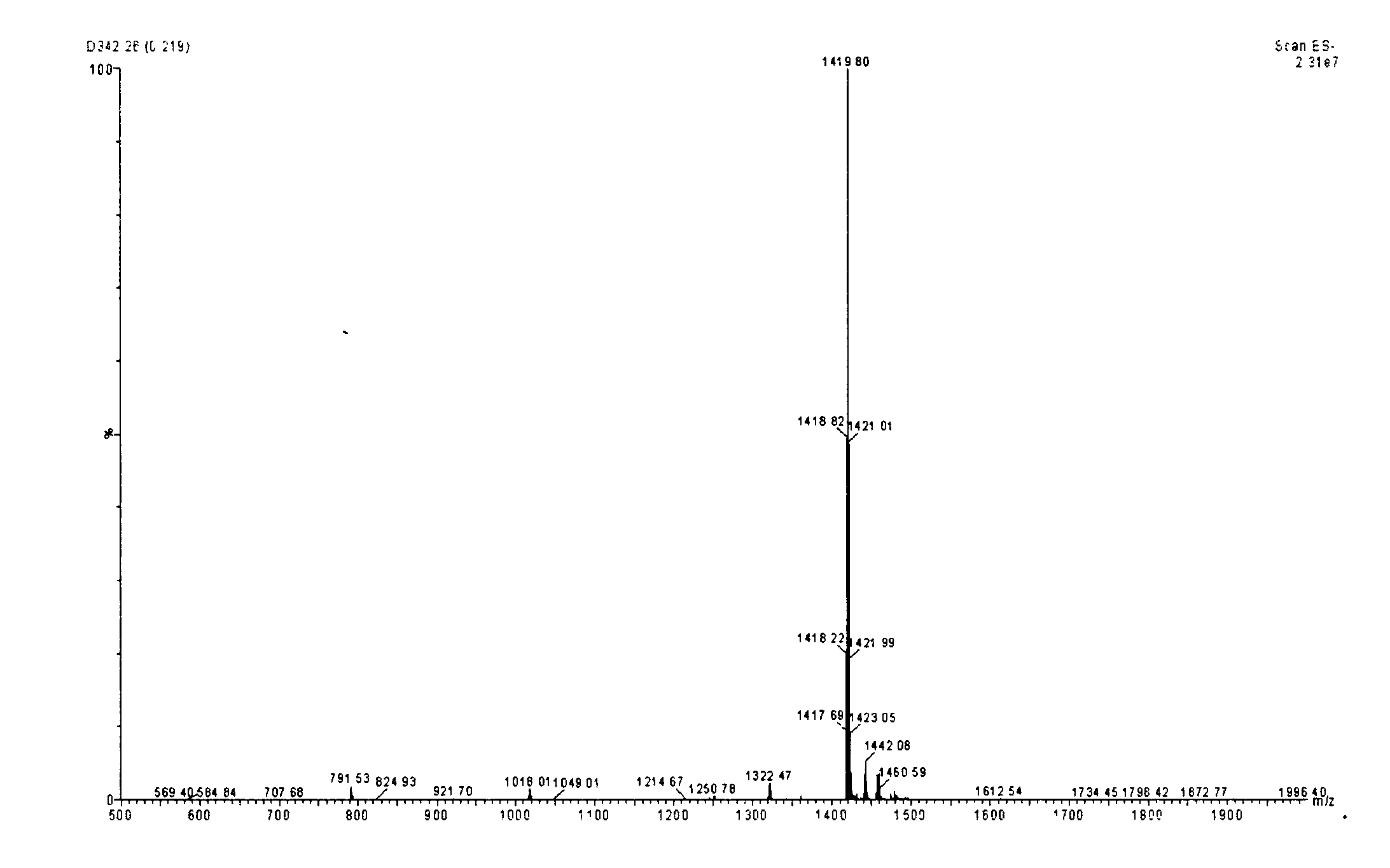Preparation method for new polypeptide having tissue protection activity, and application of new polypeptide in treatment
An active and alkaline technology for tissue protection, applied in the field of medicine and biology, can solve problems such as increased intracranial pressure, compression of the life center, and impact on heart function
- Summary
- Abstract
- Description
- Claims
- Application Information
AI Technical Summary
Problems solved by technology
Method used
Image
Examples
Embodiment 1
[0018] Example 1: Chemical synthesis and purification of polypeptides:
[0019] Taking the amino acid sequence shown in SEQ ID No.2 as an example, the polypeptide is chemically synthesized.
[0020] Synthesized by Fmoc solid-phase method:
[0021] Adopt solid-phase synthesis instrument, select the val-2 chlorotrityl resin of 0.5 gram as initial resin, add successively in the synthesis reaction tube:
[0022] Fmoc-leu, Fmoc-gly, Fmoc-ala, Fmoc-Asp(otbu)fmoc-asp(otbu), Fmoc-ala, Fmoc-pro, Fmoc-lys(boc), FMoc-gly, FMoc-pro, Fmoc- pro, FMoc-pro, Fmoc-Glu(otbu), Fmoc-gly.
[0023] Add DIC / DMF solution, HOBT / DMF solution and DMF solution to the reagent bottle. Start the synthesis instrument and connect it to the computer, enter the synthesis program, and start the synthesis.
[0024] Compositing post-processing:
[0025] Take the resin out from the synthesis reaction column, put it into a glass container with a sintered glass filter at the bottom, and use DMF (dimethylformamide...
Embodiment 2
[0041] Embodiment 2: stability test
[0042] The polypeptide of the present invention was incubated at 40°C for 76 days and 120 days to test its stability. The stability test was determined by HPLC method. The concentration of polypeptide in aqueous solution is 0.2% (w / v): column, Kromasil100, 5u, 250x 4.6mm; mobile phase, water / acetonitrile solution of 0.1% trifluoroacetic acid (0 to 50vol.%), within 25 minutes Gradient elution, flow rate 1ml / min; detection: UV, 218nm.
[0043] For comparison, the free polypeptide and its monoacetate salt were used.
[0044] Table 1
[0045]
[0046] It can be shown from the data in Table 1 that the stability of the polypeptide of the present invention is very high. The solution still has more than 97% of the target substance after 120 days at 40°C.
Embodiment 3
[0047] Embodiment 3: the toxicity of polypeptide of the present invention
[0048] The acute toxicity of the polypeptide of the present invention is determined by intragastric administration and injection in mice.
[0049] Solution preparation:
[0050] Use 25 mg of the polypeptide of the present invention, add sterilized water to 20 ml, and prepare a solution with a concentration of 1.25 mg / ml for oral gavage.
[0051] Use 25 mg of the polypeptide of the present invention, add sterilized water to 10 ml, and prepare a solution with a concentration of 2.5 mg / ml for intraperitoneal injection.
[0052] Dosage Calculation:
[0053] The volume of oral gavage administration to mice is 40 ml / kg body weight, so the administration dose is: 1.25 mg / ml*40 ml / kg=50 mg / kg.
[0054] The volume of intraperitoneal injection in mice is 20ml / kg body weight, so the dosage is: 2.5mg / ml*20ml / kg=50mg / kg.
[0055] Take 80 healthy mice and divide them into four groups for experiment. After adminis...
PUM
 Login to View More
Login to View More Abstract
Description
Claims
Application Information
 Login to View More
Login to View More - R&D Engineer
- R&D Manager
- IP Professional
- Industry Leading Data Capabilities
- Powerful AI technology
- Patent DNA Extraction
Browse by: Latest US Patents, China's latest patents, Technical Efficacy Thesaurus, Application Domain, Technology Topic, Popular Technical Reports.
© 2024 PatSnap. All rights reserved.Legal|Privacy policy|Modern Slavery Act Transparency Statement|Sitemap|About US| Contact US: help@patsnap.com










